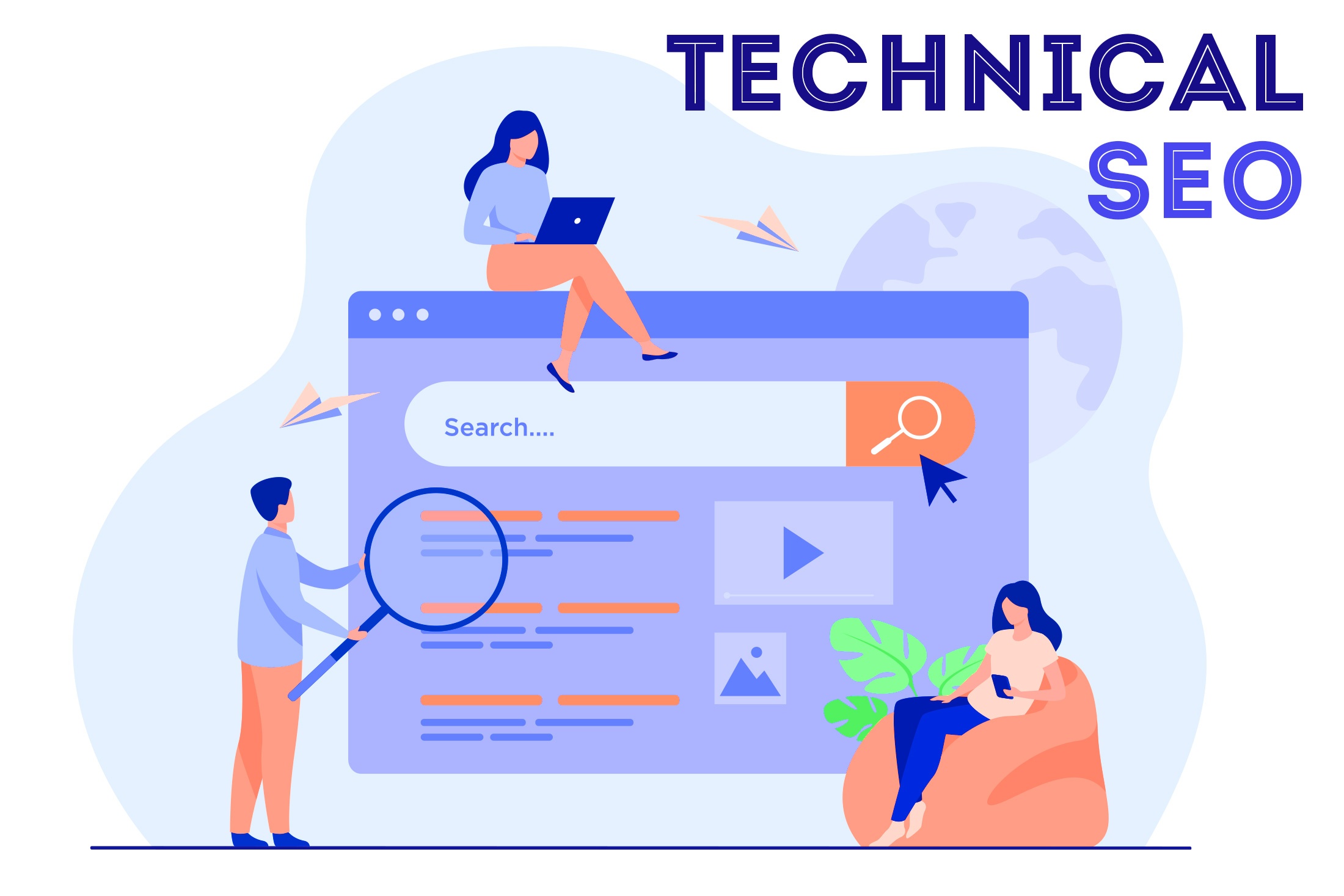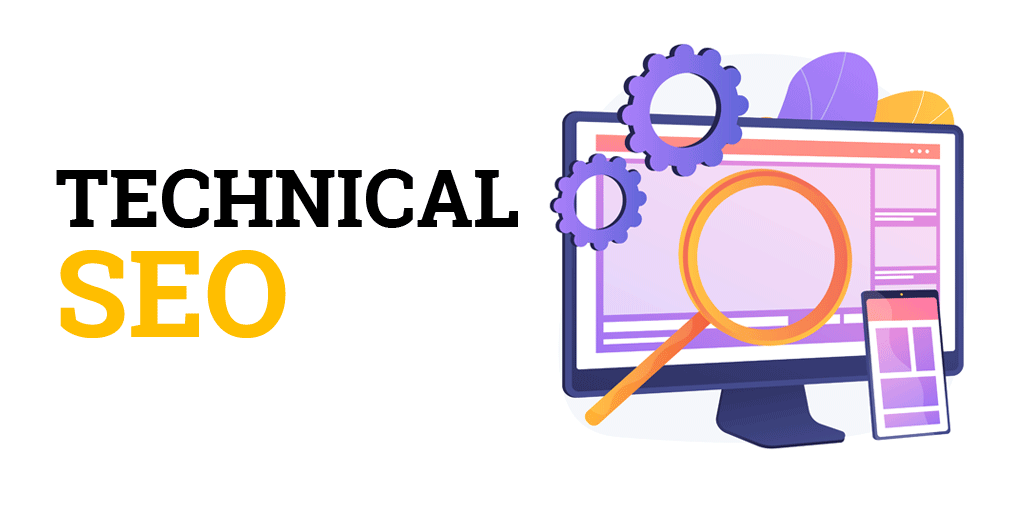Technical SEO Checklist From Semalt

High positions of the website in organic search results for the most profitable phrases is the dream of every entrepreneur who conducts large-scale online marketing activities. Positioning a website is extremely time-consuming and requires proper preparation. Without website optimization tailored to a specific case (both in terms of substantive content and technical aspects), the entire process may be even longer, and its effects may turn out to be not entirely satisfactory.
In this article:
- we will focus primarily on the technical aspect of SEO;
- we will explain the importance of the appropriate structure of a page and the correctness of its code for the position in the search ranking;
- we will present a list composed of 08 sub-headings, which will facilitate the organization of activities to improve the quality of the website in technical terms.
Substantive content and good quality code
Actions aimed at increasing the ranking should be carried out on two levels. One of them is the outer layer, which is visible to the naked eye - valuable texts or interesting graphics that draw the user's attention. Thanks to them, you can extend the time of a single session and significantly reduce the bounce rate. The second level that cannot be forgotten is the technical aspect of the website. In this regard, it includes the quality of the code, the structure, and the distribution of material on the site.
Technical errors often make it impossible to bring the website to the TOP 10, not to mention the top three - places in the search engine ranking that provide the most traffic on the website.
How to ensure the correct technical structure of the website? What to do to eliminate any errors that hinder positioning? At this point, it is necessary to point out the activities aimed at improving the quality of the website from the technical side.
They include:
- professional SEO audit;
- website optimization carried out based on prepared guidelines.
In this article, we provide information on the technical side of SEO. After careful reading, each reader will be a bit more oriented on the topic, and a specific checklist will help to plan the first activities aimed at even better optimization of the website.
What is the importance of technical SEO?
Technical SEO for a website is nothing short of a solid root system for a tree. It allows you to firmly embed the page in key positions for profitable phrases and website traffic. If you want to make your website even more visible on the web, you absolutely need to take care of technical SEO.
A technically correct website has a good chance of jumping into attractive positions in natural search results without any additional actions. Of course, certain conditions must be met, such as valuable content or an extensive link profile. Comprehensive action will allow you to gradually climb the next steps on the way to success, without the need to incur ever-increasing costs related to marketing.
You can also turn the proverbial cat's tail and see what happens when the quality of the code on the page, its structure, and other technical elements leave a lot to be desired. In this case, likely, even the strenuous efforts of SEO specialists will not be able to bring satisfactory results. Without technical SEO optimization, the website's architecture will sooner or later crumble. Google robots will not be able to learn anything interesting from it, and this in turn will translate into permanently low positions in the search engine ranking. Then, neither a diversified profile of links leading to the website, nor even the best content or graphics on the website, created on an individual order, will help.
Optimization priorities - where to start?

The point is not to argue with other team members whose work is more important. It is worth realizing that success in SEO can only be achieved by comprehensive activities that include both technical optimization of the website and investment in valuable content. However, a certain sequence of actions should be maintained so that the strategy is coherent and brings the best benefits. Where to start with technical SEO optimization and what aspects to take into account when analyzing the condition of the website? Check the checklist we have prepared - you can use it both when you plan to optimize it yourself, and when you outsource such activities to an agency.
The work of the entire team is of great importance. If you want to find as many errors and imperfections in the website structure as possible and be able to make the necessary corrections, you need to use a wide range of knowledge. An individual action may extend over time, which will not help the site break through into the top search rankings. If you are just thinking about putting your website on the web, make sure that it has a good quality CMS that will allow you to make optimization changes.
Detailed audit - why is it worth carrying out?
When going on a trip on the mountain trail, it is worth having a well-prepared plan, including the departure time, the route, estimation of the journey time (taking into account possible difficulties along the way), as well as the necessary equipment that may be useful during the trek. The better the action plan is developed, the greater the likelihood that the expedition will be successful. It is exactly the same with positioning - the better the strategy is planned, the more factors it takes into account, and the sooner the website is technically optimized, the more spectacular results you can count on.
What are the benefits of performing a detailed audit and introducing technical amendments to the website structure?
- Google robots will have easier access to the website content, thanks to which they will be able to place it in higher positions in the ranking.
- Correctly securing the website (at this point, the SSL certificate is a generally applicable standard) will translate into a greater trust of users.
- A well-optimized website is able to climb the key positions for certain phrases on its own, without the need to invest in their subsequent positioning, which will reduce expenses incurred on internet marketing.
- Faster page loading will reduce the bounce rate.
- The availability of the website on various mobile devices will make it possible to reach a wider group of users with the content of the website.
The above-mentioned benefits can only be achieved through comprehensive diagnostics and the subsequent elimination of technical errors on the website. Declines in position for key phrases, lack of SEO effects, less and less traffic on the website and drastically decreasing conversion may be symptoms of errors in the structure and code. It is worth eliminating them before the situation becomes very serious. It is even better to prevent them - as in the case of diseases prevention is better than cure. A detailed SEO audit is worth performing not only in the case of websites that have been in the network for years with problems regarding positioning, but also in the case of new websites, even before their positioning begins - then you can count on the optimal results of your activities.
Which SEO tool is best suited to check the health of the website?
There are many interesting SEO tools on the market that allow you to check the health of a website on many levels and in various aspects. Using them may turn out to be quite complicated for the average user, and the data presented in the charts will not bring much, without a thorough understanding of the subject.
However, it is also worth mentioning the relatively easy-to-use tools, thanks to which everyone has a chance to learn a bit more about the condition of their own website. Who knows - maybe it will be the first impulse for a more conscious approach to the technical issue when handling a website?
The Dedicated SEO Dashboard is a last-generation tool that allows you to generate different types of reports. By analyzing the displayed data, you can find information that will later prove to be extremely important from the point of view of optimization and positioning of a specific website.
In just a few steps, this tool allows you to verify, among other things:
- how the traffic on the website from stationary and mobile devices is distributed (weak mobile traffic may indicate that the website is not adapted to display on tablets or mobile phones and requires additional actions to create an attractive responsive version);
- whether the conversion rate is at a satisfactory level, and if not, what could be the reasons for it (the higher the conversion rate, the better the profits - so it is worth considering this issue in a special way);
- what is the demography of website users (such information allows, among other things, to create content closely tailored to the requirements of a specific target group, thanks to which the website will receive users who are actually interested in the offer, which will reduce the bounce rate).
This basic information will allow you to get a very general picture of the condition of the website; but when you notice some irregularities at this stage, you can assume that a professional and very detailed SEO audit is absolutely justified.
Technical SEO - checklist, what you have to remember

The checklist presented below should make it much easier to plan the technical validation of the website. Check each point in turn and find out how technical SEO is doing on your website. If you are unable to carry out the activities on your own, contact the specialists who will conduct a detailed technical audit of the website and prepare a list of clear guidelines to be implemented at the optimization stage.
Here are the 8 important aspects that must be examined when analyzing a website in terms of technical accuracy.
1. Security certificate
The issue of security should be an absolute priority for every website administrator. Nowadays, an SSL certificate is a standard worth sticking to. Pages without a certificate do not inspire trust among Internet users (pop-up messages about a possible threat also contribute to this), which may be particularly visible in the case of online stores. Users do not want to entrust their data to poorly secured websites. It is also worth considering the implementation of the HTTPS protocol in terms of bots - for Google, a website with a certificate is a website that cares about user safety.
2. Properly set redirections
Thanks to correctly set browser redirects, they know how to direct the user to find interesting content. Keep your redirects as simple as possible, otherwise, you might get a loop in them. Overly intricate redirects also take longer to load your website, which harms the user experience. Particular attention should be paid to the correctness of redirects after the implementation of security certificates and at the time of deleting specific subpages on the website or during migration, e.g. to another CMS. Thanks to this, navigation on the website will run smoothly.
3. Robot.txt file
A lot of different data can be found on the server. The vast majority of them are created for users, but some files were created solely for the use of bots indexing websites available on the web and qualifying them for appropriate positions in the ranking. A properly optimized robot.txt file shows the robots the path on which they are to move. Appropriate entries in the file can make you designate areas to which search engine robots will not have access and which they will not take into account when indexing. Thanks to this, you can avoid a situation in which, for example, a shopping cart will appear in the search results.
4. Optimizing the page loading time
In today's world, time is the most important. The user, who will have to wait long seconds for the website to fully load, will probably quit browsing it quickly and never come back, even if the offer is very tempting. The higher the bounce rate, the greater the likelihood that Google bots will rate your site as unfriendly to users, hence just a step away from lowering your search ranking. The page loads can be checked using the Dedicated SEO Dashboard. Shorter load times can be achieved by improving the code, data compression, or changing hosting, among other things.
5. The sitemap.xml file
The sitemap is another file created mainly for search engine robots. Thanks to it, bots know how to efficiently navigate the site and get information on, for example, when a specific subpage was last updated. A properly created sitemap should contain information about the set of URLs on the site. It is worth remembering that the sitemap.xml file should not be too extensive. In justified cases, you may be tempted to prepare several such (smaller) files instead of one.
6. Internal linking system
The optimal structure of the website will make it easier for the user to move between the individual subpages on the website. You should remember to update internal links each time your content is migrated. If internal linking does not work properly, it may lead to a situation in which the user does not reach the content he / she is interested in. At this point, it is also worth going back to the information presented when discussing correctly set redirects on the website.
7. Site structure
It is worthwhile for the user to facilitate navigation on the website as much as possible. This is of great importance for Google, which makes sure that pages that are intuitive to use are displayed in the first place in the search engine ranking. If your site is structured in such a way that navigating it will be too breakneck, the result will be quickly noticeable in the form of increasing bounce rates and decreasing conversions. The key to success lies in a well-designed menu that will suit both users and robots. The real challenge, in this case, is finding the golden mean. The information architecture should be constructed in such a way as to accurately reflect the content. In this aspect, a search engine adapted to the needs of Internet users can also be of benefit.
8. Duplicate content
If the user comes across duplicate content on the website, it will certainly not encourage him / her to browse its further content. This situation is also disadvantageous due to the extended charging time. Clearing the content structure will facilitate the operation of the Google search engine bottom, which may translate into additional points in the ranking.
Optimization activities within a specific website should be tailored to its individual needs. However, finding any errors in the code or structure of the website will only be possible when a detailed SEO audit is carried out. The above checklist covering technical SEO is a solid step, and climbing them will allow you to achieve the ideal of a well-structured and error-free website. This situation will create an ideal basis for later, possible positioning.
Why is it worth investing in technical SEO?

From the point of view of the website analysis or the audit carried out, we have three pillars that we can analyze separately but which as a whole form a document called an SEO audit.
- Off-site - that is, the analysis of the website's environment with particular emphasis on the analysis of backlinks
- On-site - that is, the analysis of the content and distribution of keywords
- Technical SEO - what was written above - from errors to indexing, and the use of canonicals or combating content duplication and cannibalization
By forcing the Google search engine to index the website in the best possible way, while getting the maximum benefit, the website positions and sells itself perfectly. The better the website is indexed, the faster it works and the more the user wants to come back to it, the better.